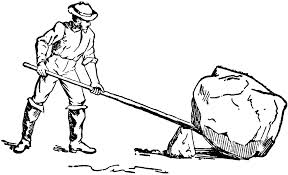 This article has some real gems for both commercial brokers (commercial realtors) and commercial loan brokers, so please read on. Both kinds of professionals need to finish this article.
This article has some real gems for both commercial brokers (commercial realtors) and commercial loan brokers, so please read on. Both kinds of professionals need to finish this article.
Historically, my hard money commercial loan company, Blackburne & Sons, has relied on commercial loan brokers to bring it most of its deals. The advantage of advertising to mortgage brokers is marketing leverage. Commercial loan brokers, this section on marketing leverage is your gem.
Let me explain what I mean by marketing leverage. Let’s assume that the average mortgage broker spends $400 per month advertising for real estate loans. The mortgage broker might use a classified ad in the newspaper or an advertisement in the local PennySaver. He might buy AdWords on Google. He might call on realtors. He might market for leads using direct mail. Marketing for real estate loans using direct mail (snail mail) is very expensive and is essentially a complete bust if you are seeking commercial loans. It does work, however, for home loans. My point is that the typical mortgage broker spends at least $400 per month marketing for real estate loans.
If you can reach a mortgage broker, every ten days to two weeks, using a fun, entertaining, wacky, and intentionally unprofessional newsletter for, say, $1 per month - and if the mortgage broker himself is spending $400 per month marketing for real estate loans - you will have reached a huge market for your lousy $1 expenditure. You will be able to compete for any deal that your mortgage broker finds that fits your niche. You have leveraged that one marketing dollar by 400 times (his $400 expenditure). I love marketing leverage.
But the commercial loan market is changing - evolving - become more efficient. In the past, very few hard money lenders, like Blackburne & Sons, made commercial loans. Since the real estate crash caused by the Great Recession, Federal regulators have made it extremely difficult for hard money lenders to make loans on owner-occupied homes. Many hard money lenders therefore have fled residential lending, and they are now making commercial loans.
Hard money commercial loan companies, like ours, now have far more competition. Mortgage brokers therefore have lots of choices, and one hard money commercial mortgage loan is often priced much like another. Blackburne & Sons can no longer rely on being the only company willing to make a commercial loan.
Here is a vitally important concept that I really need to engrain in you: “An investor is an investor.” The same guy who has a large stock portfolio may also own commercial real estate. He might also invest in first trust deeds. He just needs to be wealthy.
The way I raised my first private mortgage money thirty years ago was by advertising to my wealthy former commercial loan borrowers. “George, you turned former commercial loan borrowers into trust deed investors? You turned borrowers into lenders?” Yup, and it makes perfect sense. Who owns large office buildings? Poor folks? I think not.
This brings up the gem I promised for commercial brokers: Every commercial broker (commercial realtor) should also own a commercial mortgage company. There is no better way to meet wealthy investors in the legitimate course of business than to own a commercial mortgage company. (Please read that last sentence again.) Once you meet these wealthy income property investors through your commercial mortgage company, you can sell them commercial real estate.
My main point today is our loan officers at our commercial loan company need to start saving the contact information of every wealthy income property investors that they meed in the legitimate course of business. The same is true of any commercial brokers (commercial realtors) they meet because these commercial brokers can introduce them to wealthy income property investors who need commercial loans.
The goal is this: That each commercial loan officer will have so many contacts in the world of wealthy income property investors that his business will morph from being a guy who has to beat the bushes for commercial loans to a guy who works full-time just closing commercial loans for his network of commercial loan clients. The commercial loan officer will stop being a wholesaler of commercial loans to becoming the guy with the real financial power - a commercial loan officer with hundreds of loyal commercial loan clients.




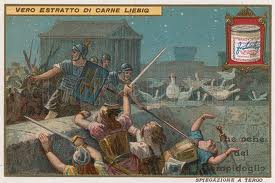 In the year 390 B.C. - two-hundred-ninety years before the birth of Julius Ceasar - Rome was just a small city-state. We are not talking about the Roman Empire now.
In the year 390 B.C. - two-hundred-ninety years before the birth of Julius Ceasar - Rome was just a small city-state. We are not talking about the Roman Empire now. 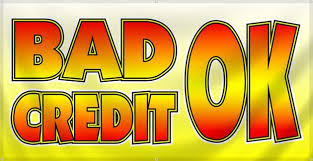 One of our commercial loan officers said to me this week, "George, this commercial loan cash flows really-really well." To which I replied, "I would much rather make a commercial loan that didn't cash flow worth a darn." Why of EARTH would I say such a thing?
One of our commercial loan officers said to me this week, "George, this commercial loan cash flows really-really well." To which I replied, "I would much rather make a commercial loan that didn't cash flow worth a darn." Why of EARTH would I say such a thing?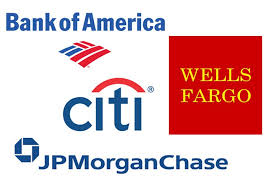 At the end of this article, I am going to make you the most favorable offer of your life. It's like Jennifer Anniston asking you if it would okay if she kissed you. Is this a trick question?
At the end of this article, I am going to make you the most favorable offer of your life. It's like Jennifer Anniston asking you if it would okay if she kissed you. Is this a trick question? Blackburne & Sons
Blackburne & Sons
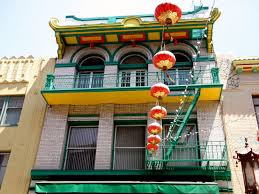 Placing a commercial loan on a very desirable commercial property is often problematic. When lots of commercial investors compete to own a well-located property (think of a well-maintained but small apartment building within walking distance of Chinatown), the prospective buyers bid up of the price. This drives down the cap rate, and the purchase money commercial loan simply does not cash flow.
Placing a commercial loan on a very desirable commercial property is often problematic. When lots of commercial investors compete to own a well-located property (think of a well-maintained but small apartment building within walking distance of Chinatown), the prospective buyers bid up of the price. This drives down the cap rate, and the purchase money commercial loan simply does not cash flow. Commercial loans on politically-charged properties are difficult to place. Examples of politically-charged properties include X-rated bookstores, marijuana cultivation facilities, abortion clinics, gambling casinos, gentlemen's clubs, and gay nightclubs or resorts.
Commercial loans on politically-charged properties are difficult to place. Examples of politically-charged properties include X-rated bookstores, marijuana cultivation facilities, abortion clinics, gambling casinos, gentlemen's clubs, and gay nightclubs or resorts.

 Most commercial real estate lenders seldom take additional collateral when they make commercial loans. For example, conduits never make
Most commercial real estate lenders seldom take additional collateral when they make commercial loans. For example, conduits never make  Now that you know that
Now that you know that  My commercial loan, hard money lending company,
My commercial loan, hard money lending company, 
